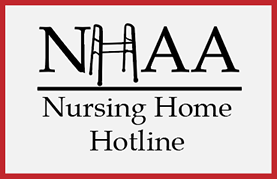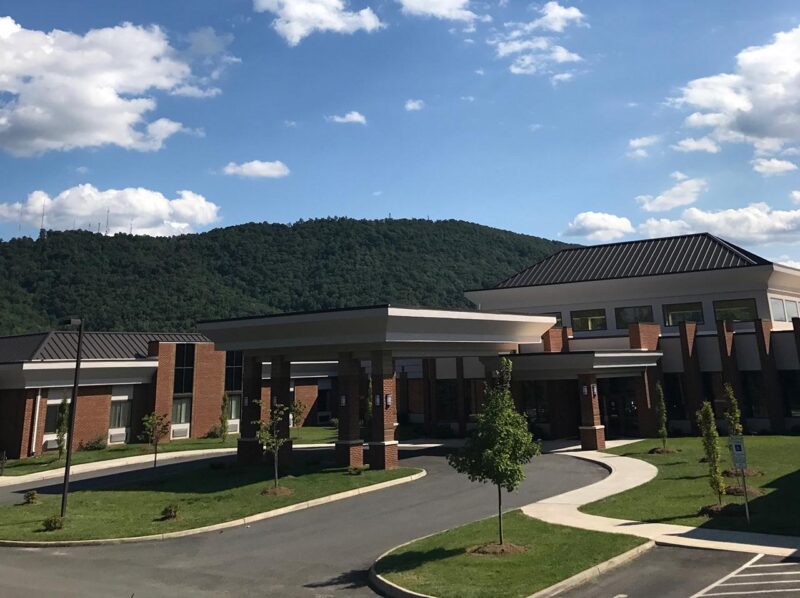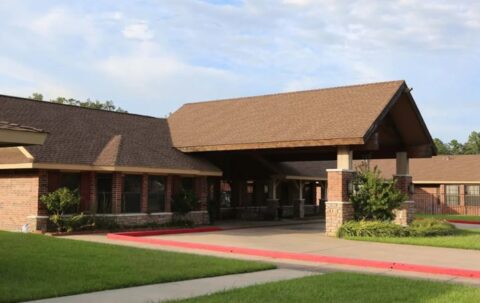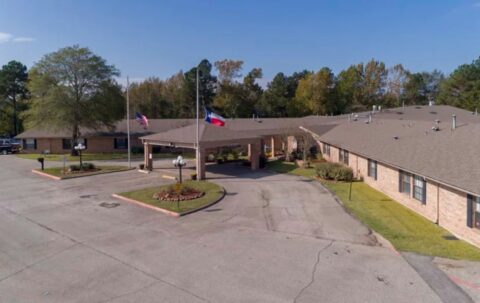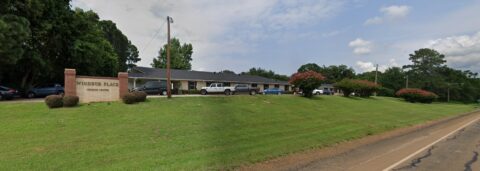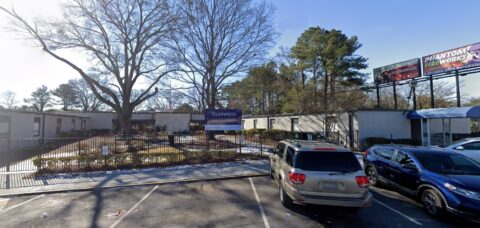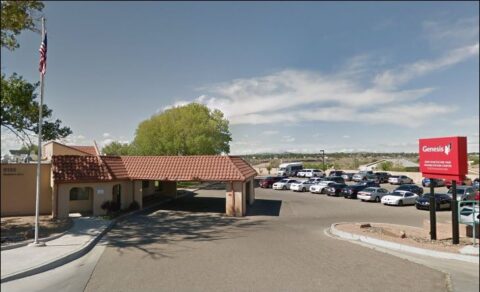State Findings:
Provide appropriate pressure ulcer care and prevent new ulcers from developing.
**NOTE- TERMS IN BRACKETS HAVE BEEN EDITED TO PROTECT CONFIDENTIALITY** 49456
Based on observation, interviews, clinical record, and facility documentation, the facility staff failed to provide treatment and services to prevent a worsening stage three pressure ulcer for one of 12 residents, resulting in harm for Resident #8 (R8), and failed to assess and implement treatment timely for a stage three pressure ulcer for one of 12 residents in the survey sample, Resident #5 (R5).
1. R8 did not have an accurate skin assessment, resulting in a delay in treatment of a worsening stage three pressure ulcer/wound.
2. R5 had a delay in treatment of a stage three pressure ulcer/wound.
The findings included:
According to the clinical record, R8 was admitted to the facility with diagnoses that included, but not limited to hemiplegia, cerebral vascular accident, muscle weakness and aphasia. R8 had a 5 day minimum data set (MDS – assessment tool) dated 7/25/23 noted that the BIMS (Brief Interview of Mental Status) was unable to be obtained. The MDS coded R8 as requiring extensive assistance on staff for Activities of Daily Living care. Section M Skin Conditions of the MDS documented that R8 had a stage three pressure wound that was present upon admission.
R8’s clinical record included a skin observation tool dated 7/20/23 that indicated the coccyx had reddness and another one dated 7/27/23 that indicated the coccyx had a pressure area, but did not document the stage of the pressure wound.
R8’s admission assessment note, dated 7/19/23, documented that no wound was present, while a skilled note, dated 7/19/23, documented that R8 had a stage 3 pressure wound on the coccyx area. Another skilled note, dated 7/20/23, documented that no wound was present. However, none of the nurses notes included any description of the wound.
R8’s clinical record documented no notifications to the physician/provider about the pressure wound and listed no treatment orders for the pressure wound since admission to the facility on [DATE].
Review of the wound consultant report, dated 7/24/23, documented a Stage 3 coccyx pressure wound was present on admission, with measurements of 1.0 cm x 1.0 cm x 0.2 cm depth (length by width by depth in centimeters). The note documented the coccyx wound had moderate amount of bloody drainage, no odor, and had reddened, fragile wound perimeters.
A physician’s order was entered on 7/26/23, upon recommendation from the wound consultant for treatment of the pressure wound to the coccyx. R8’s treatment administration record (TAR) documented that the treatments were implemented on 7/27/23 as ordered.
On 8/1/23, a comprehensive assessment, with a recommended change in treatment, was completed by the wound consultant. The assessment documented that the coccyx wound measured 3.5 cm x 2.0 cm x 2.0 cm, had moderate amount of bloody drainage, had reddened, fragile wound perimeters, and had a wound status that was noted as worsening. The wound consultant recommended cleansing the wound with 0.125% dakins solution, then apply dakins moistened fluffed gauze to wound bed, and cover with bordered foam and zinc barrier cream to reddended area. A physician’s order was entered on 8/3/23, per the wound consultant’s recommendation for the treatment change. R8’s TAR documented that the treatment was implemented on 8/3/23.
An interview was conducted with LPN# on 3/5/24 at 9:00 a.m. LPN# verbalized that the process for admission of a resident to the facility would include a head to toe assessment. LPN# verbalized that if a skin impairment was found, the process is to notify the provider, and to implement the orders given by the provider, unless the hospital sent wound treatment orders, which would be implemented.
An interview was conducted with the wound consultant nurse practitioner (NP) on 3/5/24 at 12:35 p.m. The NP verbalized that the nurses notes are used for reference on the resident’s skin observation on admission day. The NP verbalized that if no information is on the nurses notes, then the NP will talk to the resident. The NP verbalized that if the NP has never seen the resident before or anyone from the NP company, then the resident is considered a new patient for the company.
An interview was conducted with license practical nurse (LPN#5 ) on 3/5/24 at 3:00 p.m. LPN# 5 verbalized that the process for admission of a resident to the facility would include a head -to-toe assessment. LPN#5 verbalized that if a skin impairment is found, the process is to notify the provider and to implement the orders given by the provider, unless the hospital sent wound orders, which would be implemented.
An interview was conducted with a licensed practical nurse ( LPN#4, wound nurse). LPN#4 verbalized that the process for the skin observation tool on admission is that the floor nurse does the initial assessment when the patient comes into the facility and then a second skin assessment is completed after admission. LPN#4 verbalized that if the admission is Monday through Friday that LPN#4 completes the second skin assessment, as the wound consultant comes in twice weekly and completes a skin assessment. LPN#4 reviewed R8’s clinical record and verbalized that no treatment was started from admitted [DATE] until 7/27/23, adding that the nurses should have implemented skin care. When asked to identify the initial findings, the LPN#4 verbalized that there was some discrepancy from what the admitting nurse noted on admission skin assessment and what the wound nurse noted on their first skin assessment after admission.
A review of the facility documents was conducted on 3/5/24. The facility policy titled, Skin Assessments, read in part, A licensed nurse will ensure that the skin risk assessment is done upon admission, care plan specific interventions will be developed based on skin risk assessment outcomes.
The facility policy titled, Pressure Ulcer Monitoring and Documentation, read in part, A licensed nurse will assess patients for the presence of pressure ulcers/injuries and if a pressure ulcer/injury is present, the nurse will evaluate for complications. Provide pain management prior to treatment of the pressure ulcer.
The facility documentation of staff education, with the title of Basic Wound Care for Nurses and Aides, read in part, Documentation for wounds should include wound type, exudate, and the type of dressing that will be used . that all wounds should be correctly assessed and documented weekly in the resident’s chart.
On 3/5/24 at 5:00 p.m., the director of nursing (DON) verbalized that the process for skin observation on admission is for the nurse to assess, then if something is found the nurse is to notify the physician, to obtain an order, to implement the order, and to notify the wound nurse the following day, so the wound nurse can follow up. The DON stated, Skin assesssments not being conducted has been a pattern that has been identified. The DON verbalized that the same wound nurse makes rounds with the NP weekly for consistancy and that education is being provided to the nursing staff. The DON verbalized that wound orders should be implemented by the nurse that is making rounds with the NP and the orders should be entered while doing the rounds.
These findings were reviewed with the director of nursing (DON), Administrator, and the regional clinical nurse during a meeting held on 3/5/24 at 5:00 p.m.
On 3/6/24 at 2:08 p.m., the Administrator verbalized that with R8’s medical conditions, that even though no treatment had been started, I don’t know if there would have been a different outcome for this residen.t
On 3/6/24 at 2:30 p.m., these findings were reviewed with the DON, Administrator, and regional clinical nurse and no other information was provided prior to exit conference.
2. R5 did not have a comprehensive assessment completed for 3 days after a pressure ulcer was identified. A treatment order was not implemented for R5’s pressure ulcer until eleven days after the ulcer was identified.
According to the clinical record, R5 was readmitted to the facility on [DATE], with diagnoses that included, but not limited to, adult failure to thrive, pressure ulcer to sacal region Stage 3, hypertension, and anemia. A discharge return anticipated MDS (Minimum Data Set – assessment tool), dated 1/29/24, assessed R5 with no cognitive impairments. The Section M (Skin Conditions) documented R5 had a stage three pressure ulcer upon discharge to the hospital. Documentation indicated R5 returned to the facility on [DATE] with pressure ulcer.
R5’s nursing notes were reviewed from 2/4/24 through 2/7/24 and no documentation for the pressure wound was noted.
R5’s clinical record included a hospital record dated 1/31/24 that documented the Stage 3 pressure injury. On 2/3/24, the admission skin assessment documented that R5 had a stage 1 pressure ulcer on the sacral area.
On 2/6/24, the wound consultant documented a Stage 3 to coccyx, with measurements of 0.3 cm x 0.2 cm x 0.6 cm prior to debridement (cutting away of dead tissue) and 0.4 cm x 0.2 cm x 0.2 cm depth post debridement. It was also noted that the wound perimeters were fragile, with a moderate amount of bloody drainage, for which treatment was recommmended. The NP assessed R5 on 2/13/24 for wound debridment without a change in the treatment. The NP followed up with R5 on 2/20/24 and 2/27/24 and documented the wound was improving. On 3/5/24, the NP documented that the occyx wound had resolved.
Review of R5’s TAR indicated treatments were started on 7/27/23 and were being carried out.
Interview was conducted with LPN#4 (wound nurse) on 3/5/24 at 3:20 p.m. LPN#4 verbalized that there is a break in communication with the nurses about staging the wounds. LPN#4 reviewed R5’s clinical recorded and verbalized that the treatment ordered was not updated until 2/14/24 by LPN#4 and that the wound should have been treated sooner.
Interview was conducted with LPN#6 on 3/5/24 at 3:51 p.m. A review was done with LPN#6 to explain the skin assessment part of the admission note. LPN#6 verbalized that the hospital had documented the wound as a stage 3 in their report. LPN#6 verbalized that a skin assessment was completed, the dressing covering the coccyx wound was removed, and a skin observation was made, but that the wound . had appeared to be a stage 1 to me, not a stage 3 wound.
Your Experience Matters
...and we want to hear it.
NHAA is here to assist families, residents, and the community by sounding the alarm on issues like those found above. This nursing home and many others across the country are cited for abuse and neglect.
If you have or had a loved one living in this nursing home or any other nursing home where you suspect any form of abuse or neglect, contact us immediately.
We have helped many already and we can help you and your loved one as well by filing a state complaint, hiring a specialized nursing home attorney or helping you find a more suitable location for your loved one.
You can make a difference, even if your loved one has already passed away.
Please give us a call at 1-800-645-5262 or fill out our form detailing your experience.
Personal Note from NHA-Advocates
NHAA shares with all the families of loved ones who are confined to nursing homes the pain and anguish of putting them in the care of someone else. We expect our loved ones to be treated with dignity and honor in the homes we place them. We cannot emphasize enough to family members of nursing home residents; frequent visits are essential to our loved ones’ well-being and safety.
If you are struggling and upset, click here to understand your options, or contact us through our contact form or call our toll free hot line number: 1-800-645-5262.
